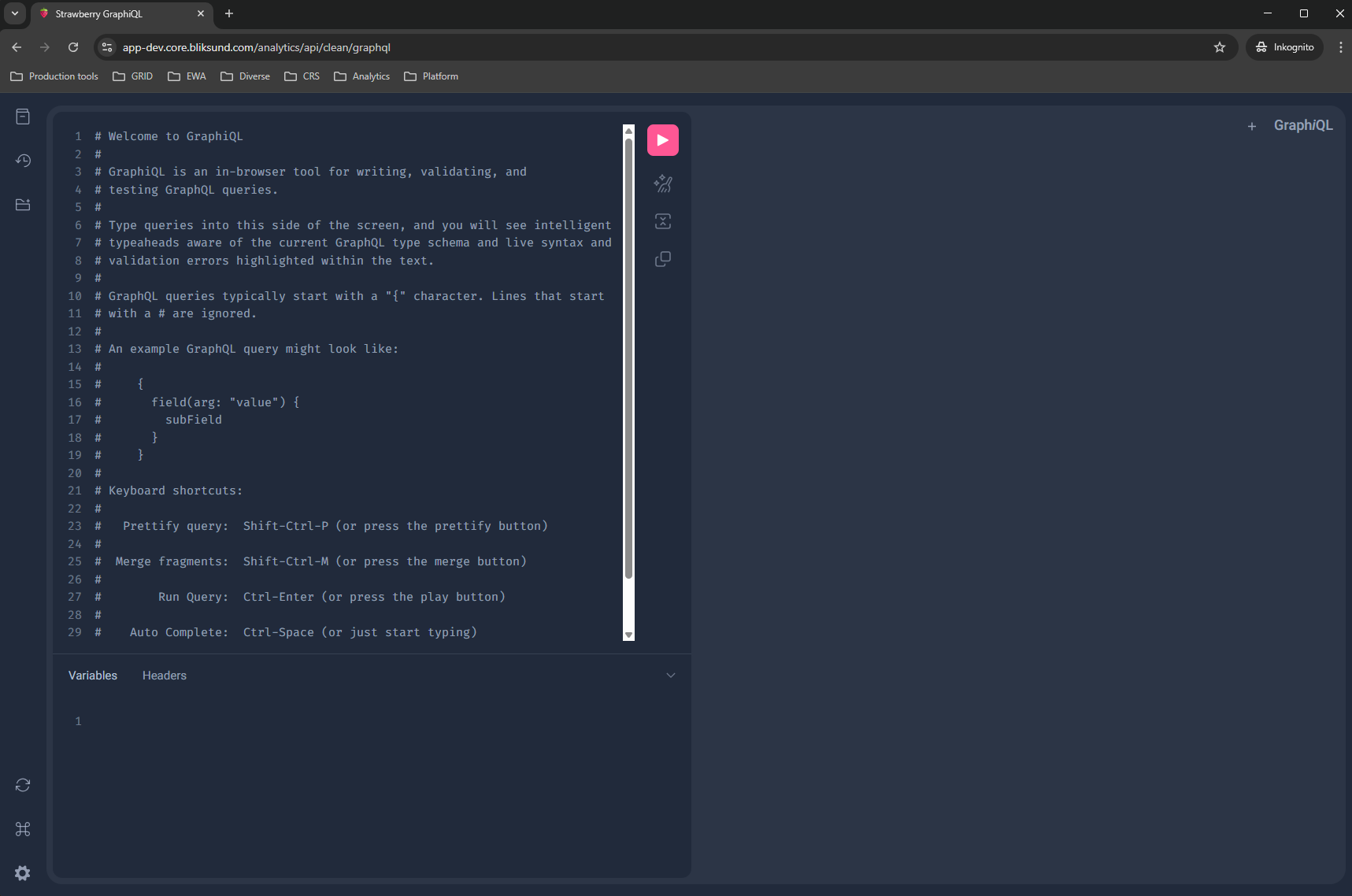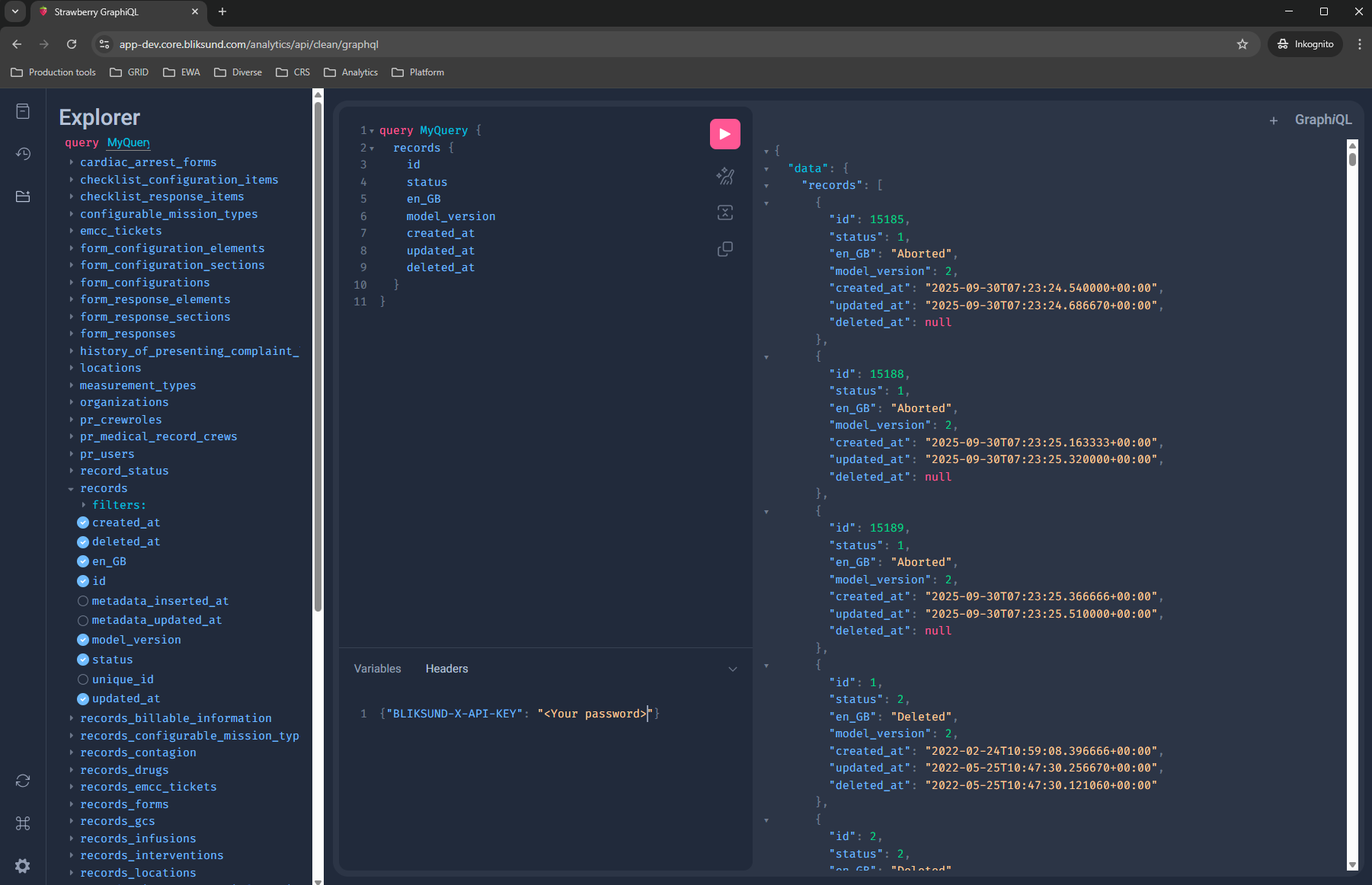How to use the Analytics API
The Analytics API provides access to your EWA analytics data. Once installed, you can query data from both the Clean and Core layers (Consepts) using the GraphQL endpoint, replacing direct database connections in your existing data integration workflows
General information
Installation and access
First you must install both the Analytics API Service and the Analytics Data Processing Service according to the installation guides. The API will then be available in your environment and you are responsible for hosting. The API URL is therefore defined by you during installation.
Authentication
The API is authenticated using an API key. This key is set and managed by you according to the installation guide. The API key must be included in the request header for all API calls. See Your first query for a practical examples.
- Header name:
BLIKSUND-X-API-KEY(or as configured in your .env file) - Header value: Your configured API key
Data structure and schemas
The data structure in the API for the Clean and Core layers mirrors what is stored in the Analytics database. Everything is documented under Analytics Data Processing. This means:
- Table names and column names are identical to your Analytics database
- Relationships between tables remain the same
Getting started
1. Verify your installation and access
After installation, verify that the API is running by opening a browser and navigating to: http://your-server:port/clean/graphql. Replace your-server and port with your actual server address and configured port. If the installation was successful, you should see the GraphQL interface (interactive GraphQL explorer).

2. Explore the GraphQL interface
The GraphQL interface provides an interactive way to explore and test your API queries.
Key features:
- Query editor (left panel): Write your GraphQL queries here
- Results panel (right panel): View query results
- Documentation explorer: Click "Docs" to browse all available tables and fields
- Query history: Access previously run queries
3. Your first query
Try this simple query to confirm everything is working:
query MyQuery {
records {
id
status
en_GB
model_version
created_at
updated_at
deleted_at
}
}
This query returns all available types in your schema. You should see a list including your available tables.

3. Integration with code
This documentation provides examples on how to interact with the API using Python or PowerBI: Examples
Troubleshooting
Connection refused
- Verify the API service is running (check Windows Services)
- Confirm the correct server URL and port
- Check firewall settings
Authentication failed
- Verify your API key is correct
- Ensure the API key header name matches your configuration
- Check that the API key is included in every request
Empty or unexpected results
- Use GraphiQL to test your query interactively (GraphQL Interface)
- Check the Documentation explorer for correct field names
- Verify your filter conditions are correct
Performance issues
- Use filtering for large datasets. Date filters is often a good option
- Request only the fields you need. An advantage with GraphQL is that you do not have to select the whole object, it can be adjusted based on your needs
Additional resources
- GraphQL official documentation: https://graphql.org/learn/
- GraphQL query syntax: https://graphql.org/learn/queries/